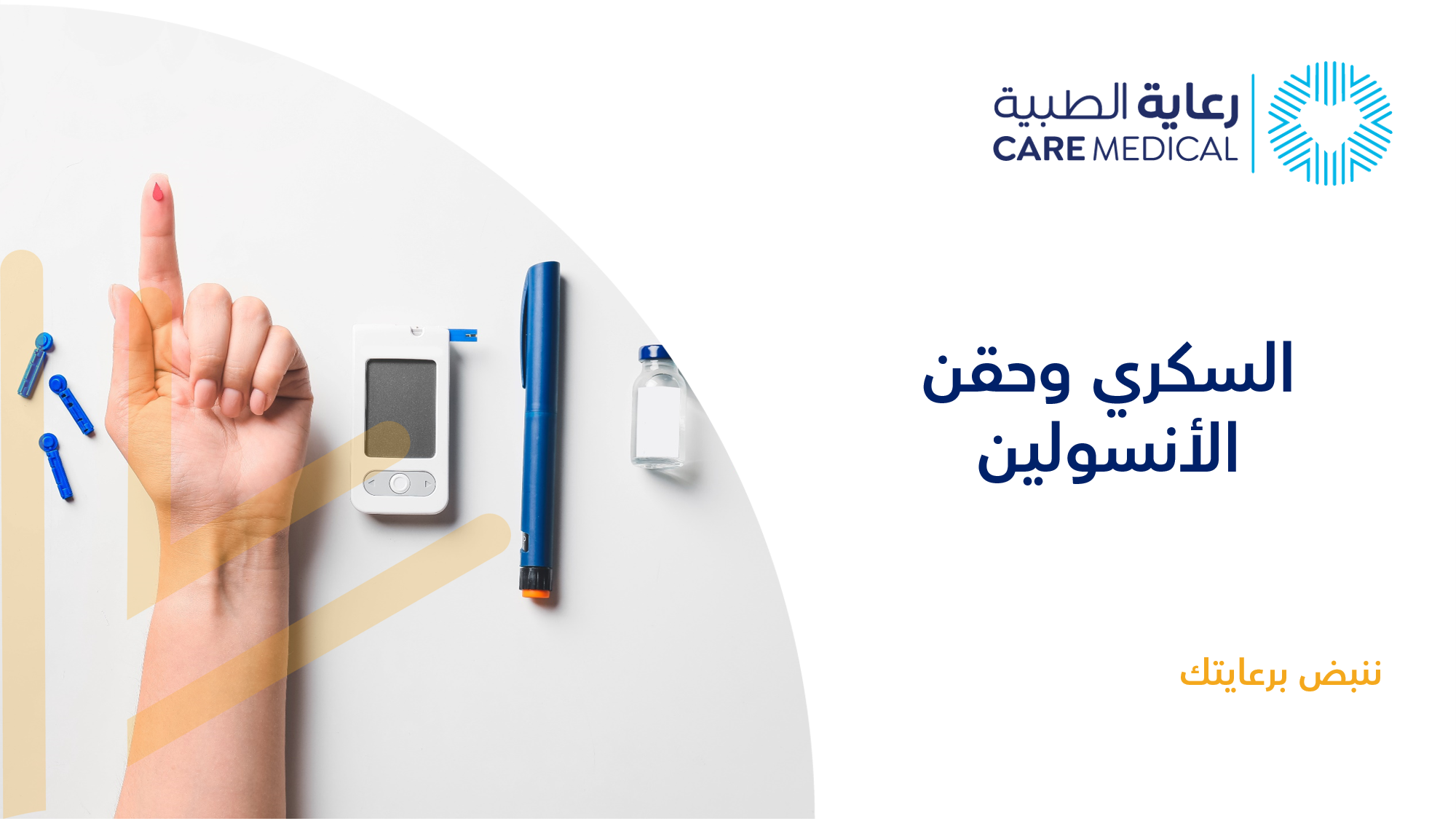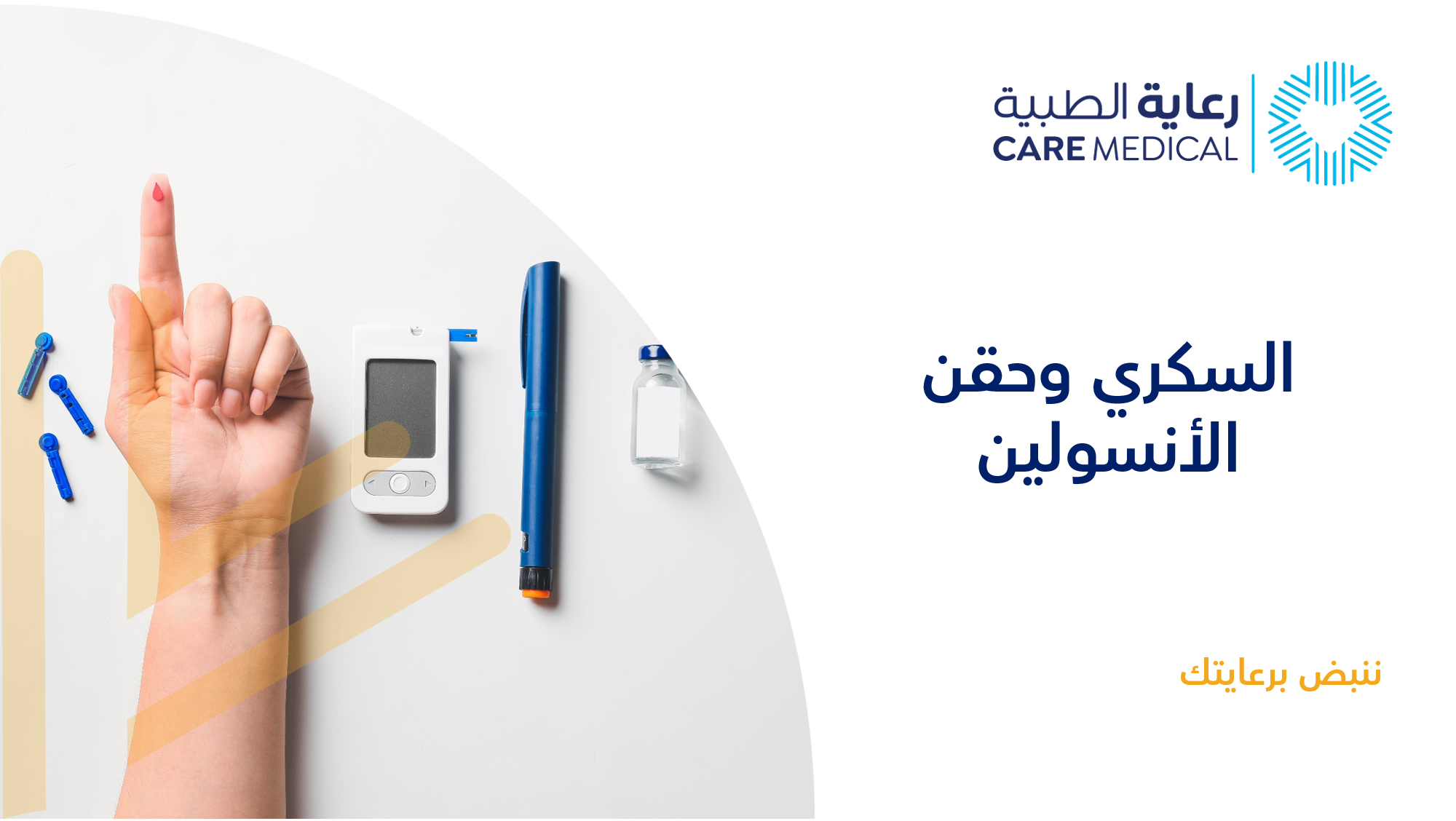Media Center - View
Diabetes is a chronic condition that affects how your body handles glucose, a type of sugar that is the primary source of energy for cells. When you have diabetes, either your body does not produce enough insulin, or the insulin it does produce does not work properly, leading to elevated levels of glucose in the blood. This can result in a range of symptoms and complications if the condition is not managed well.
Symptoms of Low Blood Sugar:
- Sweating.
- Trembling.
- Hunger.
- Blurred vision.
- Loss of consciousness in severe cases.
Symptoms of High Blood Sugar:
- Headache.
- Blurred vision.
- Extreme thirst.
- Dry mouth.
- Abdominal pain.
- Nausea or vomiting.
- Frequent urination.
Symptoms of Diabetic Ketoacidosis:
- Vomiting.
- Dehydration.
- Unusual fruity breath odor.
- Difficulty breathing or rapid breathing.
- Rapid heartbeat.
- Confusion.
- Coma in severe cases.
Insulin Injection Sites:
- Upper and outer parts of the arms (leave four fingers from the top of the arm and another four fingers from the end).
- Front and outer parts of the thighs (leave four fingers from the top of the thigh and another four fingers from the end).
- The abdomen area away from the navel (leave a distance of two fingers on either side of the navel).
- Upper part of the buttocks.
Fastest Absorption Sites for Insulin Injections:
The abdomen area, followed by the arms, then the thighs, and finally the upper buttocks.
Preparing the Insulin Pen:
1. Check the label and color of the insulin.
2. Remove the new pen from the refrigerator 30 minutes before use.
3. Wash your hands.
4. Remove the pen cap and clean the area with an alcohol swab.
5. Attach a new needle to the pen.
6. Remove the outer and inner needle caps: keep the outer cap for later use and discard the inner cap.
7. Prime the pen to remove air: dial to two units and press until you hear a click for each unit until it reaches zero.
8. Select the correct dose on the pen.
How to Inject:
1. Select the appropriate site for the insulin injection.
2. Ensure the skin is clean.
3. Inject the needle into the skin: pinch the skin using your thumb and index finger (avoid pinching the muscles) and inject the needle using the other hand at a right angle. After inserting the needle, press the insulin injection button at a moderate speed using your thumb, and keep the needle in the skin for ten seconds after pressing the button.
4. To remove the needle: unscrew the needle from the pen after the injection, cover it with the large outer cap provided with each needle, then twist and remove it from the pen.
5. Dispose of the needle properly: collect used needles in a container for later disposal. Using a new needle each time helps reduce discomfort and ensure the dose is accurate and effective.
Problems Related to Insulin Injections:
- Lipohypertrophy, a swelling under the skin caused by frequent injections in the same spot. Avoid injecting in the same place by at least 2 cm.
- Insulin may leak after withdrawing the needle, so after injecting, do not pull out the needle immediately and count slowly to ten before removing it.
How to Handle Low Blood Sugar Symptoms:
1. Drink a cup of sweetened juice or a cup with a dissolved amount of sugar.
2. Wait 15 minutes, then test your blood sugar level.
3. If the blood sugar level is good, eat a light snack to stabilize it.
4. If the low blood sugar persists, drink another cup of juice, wait another 15 minutes, and test your blood sugar again. If it is good, stabilize it with a light snack.
5. If juice is not available, you can use sweetened hard candy.




